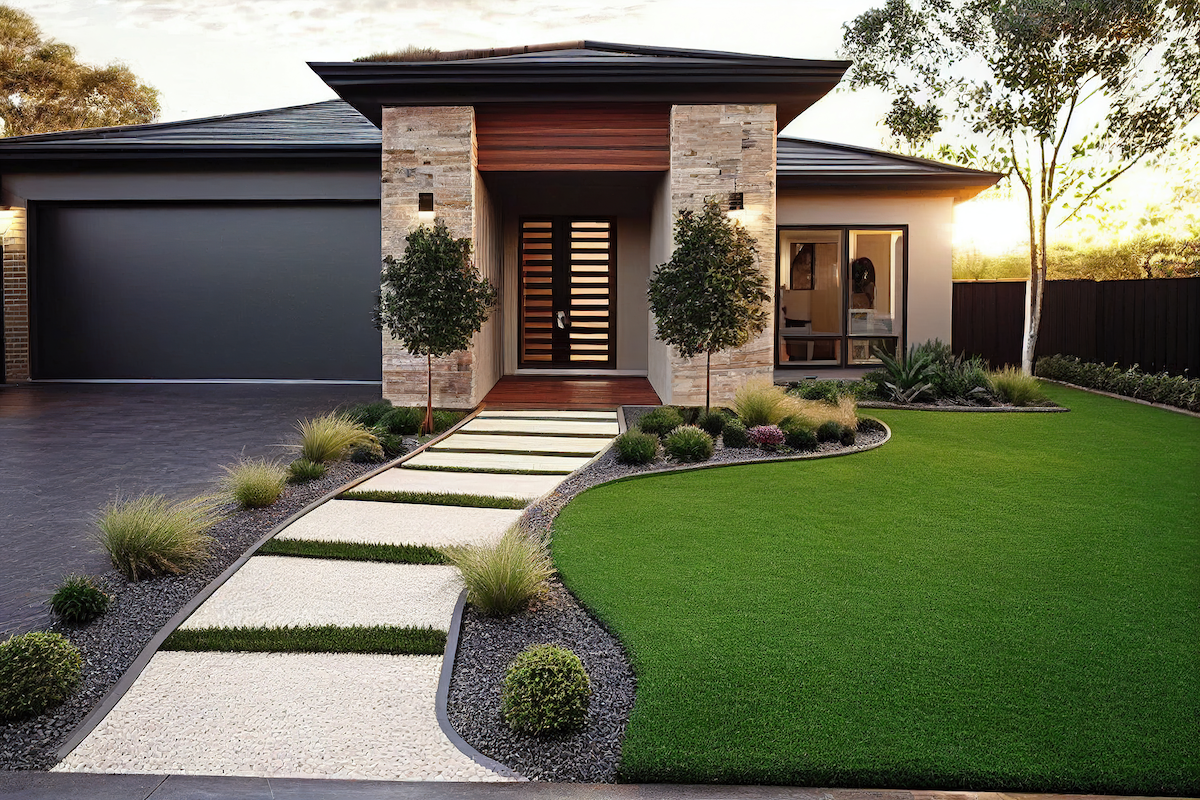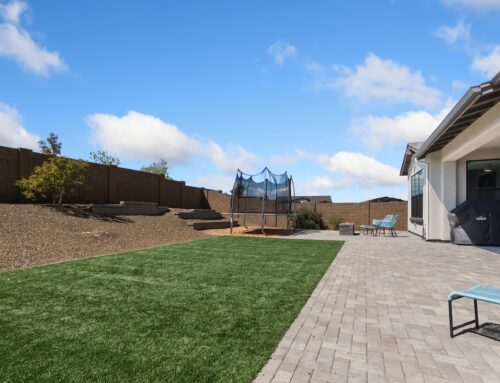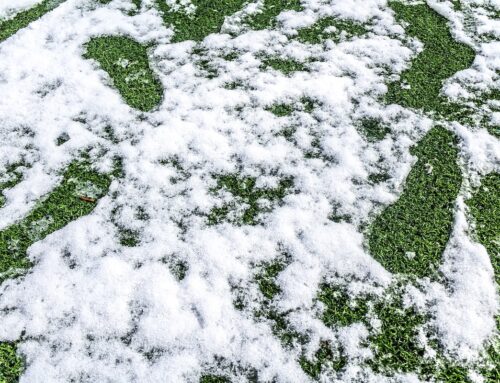Last Updated on October 8, 2025 by ReTurf
As more and more homeowners discover the benefits of artificial turf, this low-maintenance and resilient option is quickly gaining popularity in the world of landscaping. But to fully enjoy the long-lasting advantages of your synthetic lawn, it’s vital to know the ins and outs of proper care and maintenance.
So now, let’s explore six handy tips that’ll help you keep your artificial grass looking great and standing the test of time:
6 Tips to Maximize the Lifespan of Artificial Turf
1. Clean debris off your turf before it piles up too much.
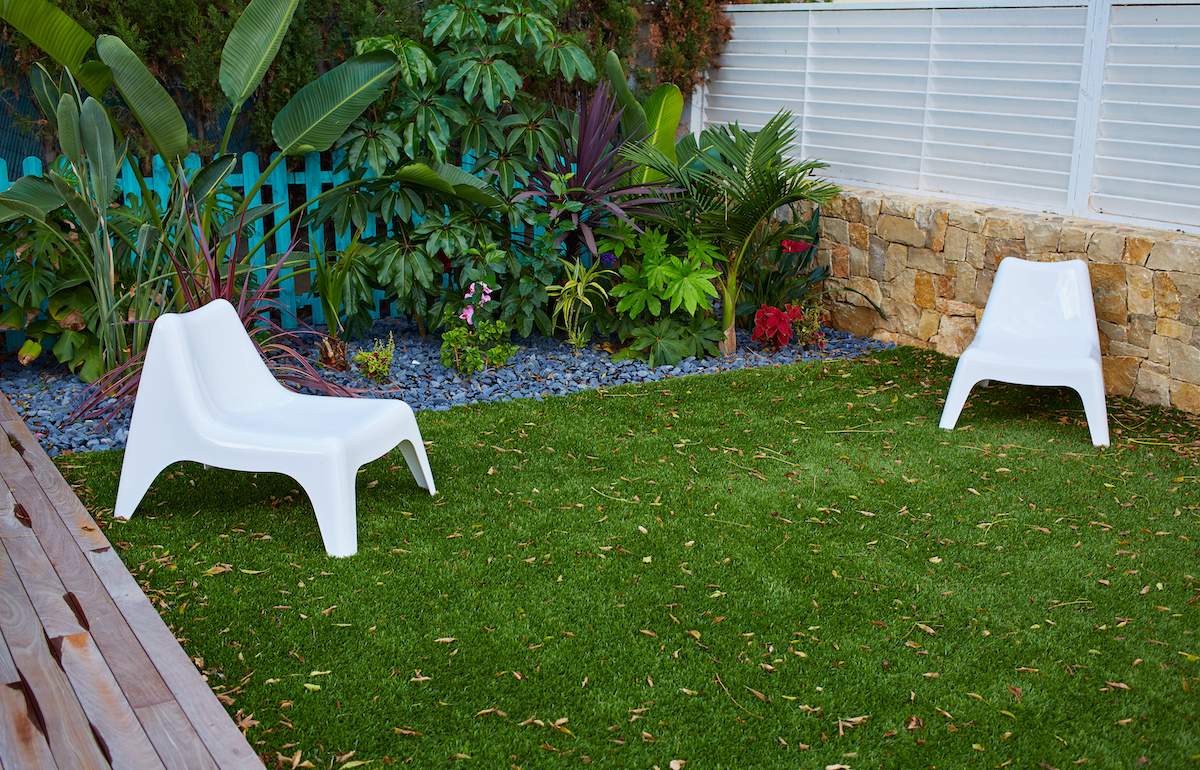
Over time, Mother Nature might decide to gift your pristine artificial turf lawn with some of her own creations, such as leaves, twigs, branches, loose mulch, or pine straw. (Especially in Fall.) While her intentions might be harmless, significant amounts of hard or sharp debris (like sticks and rocks) can pose a real threat to the durability of your synthetic grass. By regularly giving these uninvited guests the boot, you’ll be protecting your turf from potential damage, such as tears and holes that could turn it into an unsightly mess.
The photo shows a small amount of leaves and other debris on the artificial grass, which is perfectly acceptable. But regularly removing debris before it piles up will help protect your turf and keep it looking great.
2. Clean up after your pets.

Many pets—especially dogs—love artificial turf as much as they do natural grass. (Which is to say, they love it a lot!)
So when your furry friends use your faux grass to relieve themselves, be sure to clean up promptly. After your pet has urinated, spray water over the area to rinse it down. Pick up any other messes with a bag, then just rinse the area with water from the garden hose.
For the most stubborn messes, you can use a soft brush and a gentle, synthetic turf-safe soap to remove any leftover debris.
3. Brush your artificial grass regularly.
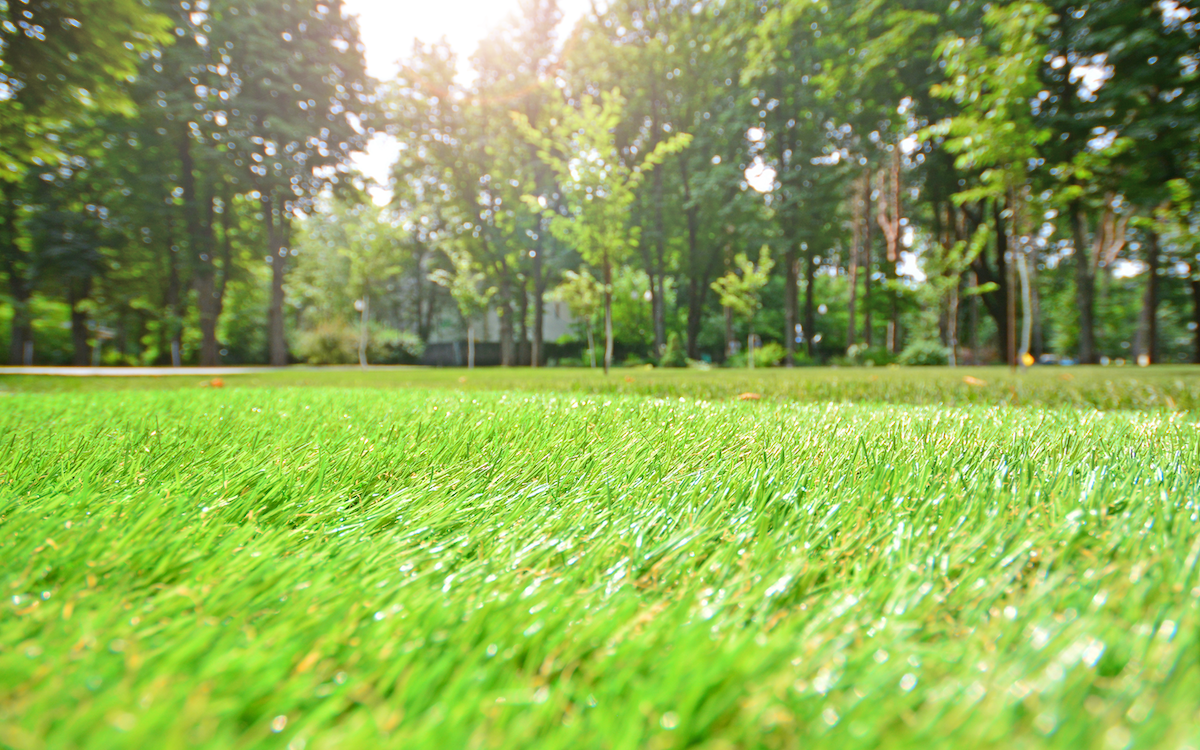
Regularly brushing up or “fluffing” synthetic grass blades helps them stay upright and maintain their appearance. Use a soft-bristle broom or a flexible-tine leaf rake to brush the grass gently. This uplifting action will prevent your turf from getting matted or flattened, and help them stand tall and proud even after periods of heavy foot traffic.
Stay away from using regular garden or steel-tine rakes on synthetic turf, as dragging sharp, hard, and/or metal pieces along it with force can cause damage. Instead, use a turf brush or rake with soft bristles or tines (soft nylon works great).
4. Watch for weeds around the perimeter.
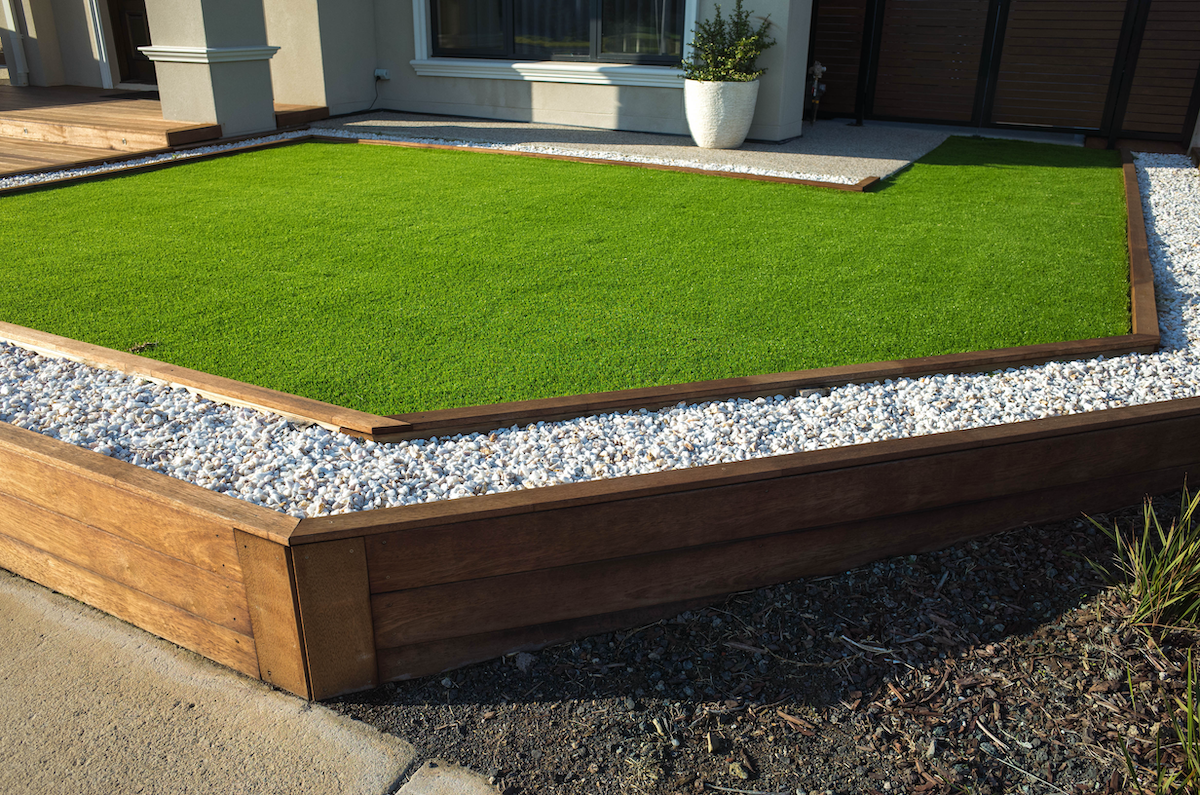
One of the advantages of artificial turf is its “natural” ability to prevent weed growth. However, stubborn weeds may still creep up beyond the turf’s edges.
To prevent any unwelcome plant drama from trying to come onto your turf, remove weeds around the borders of your lawn as they emerge. You can also use weed control solutions at the turf’s border to prevent weed growth.
Maintaining a weed-free environment not only preserves your artificial turf’s good looks; it also contributes to its longevity.
5. Address spills and stains promptly.
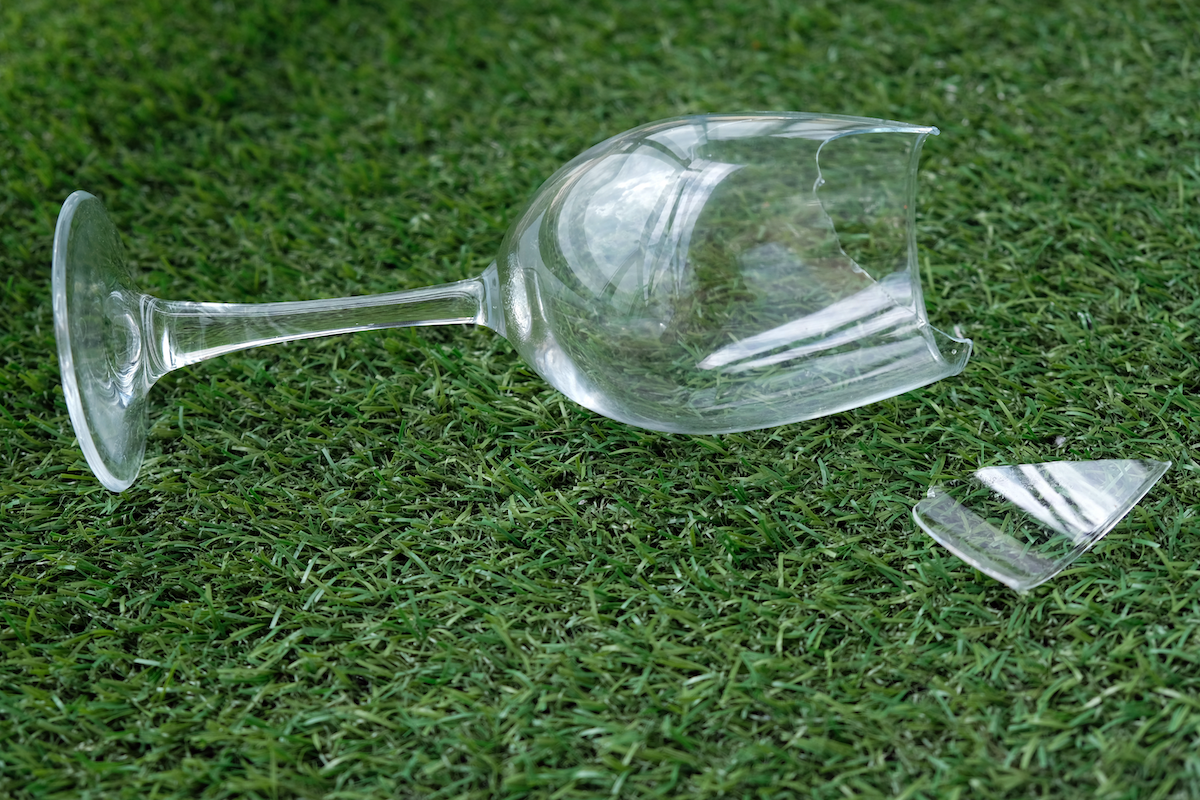
If you’re a homeowner, you know the old adage: Time waits for no one, and neither do spills.
Whether it’s an unfortunate barbecue fumble around the pool, an impromptu wine incident by the hot tub, or a rogue neighborhood Rottweiler making a tactical strike, taking care of a big mess sooner rather than later is usually best.
High-grade artificial grass is designed with stain resistance in mind—but just to be safe, you should hose down, rinse away, or clean up any major messes as soon as possible.
Be cautious with the cleaning agents you use, as some may harm your synthetic grass. Consult your artificial turf supplier for recommended products to clean your turf.
6. “Walk the grounds” every now and then to spot any potential problems before they can happen.
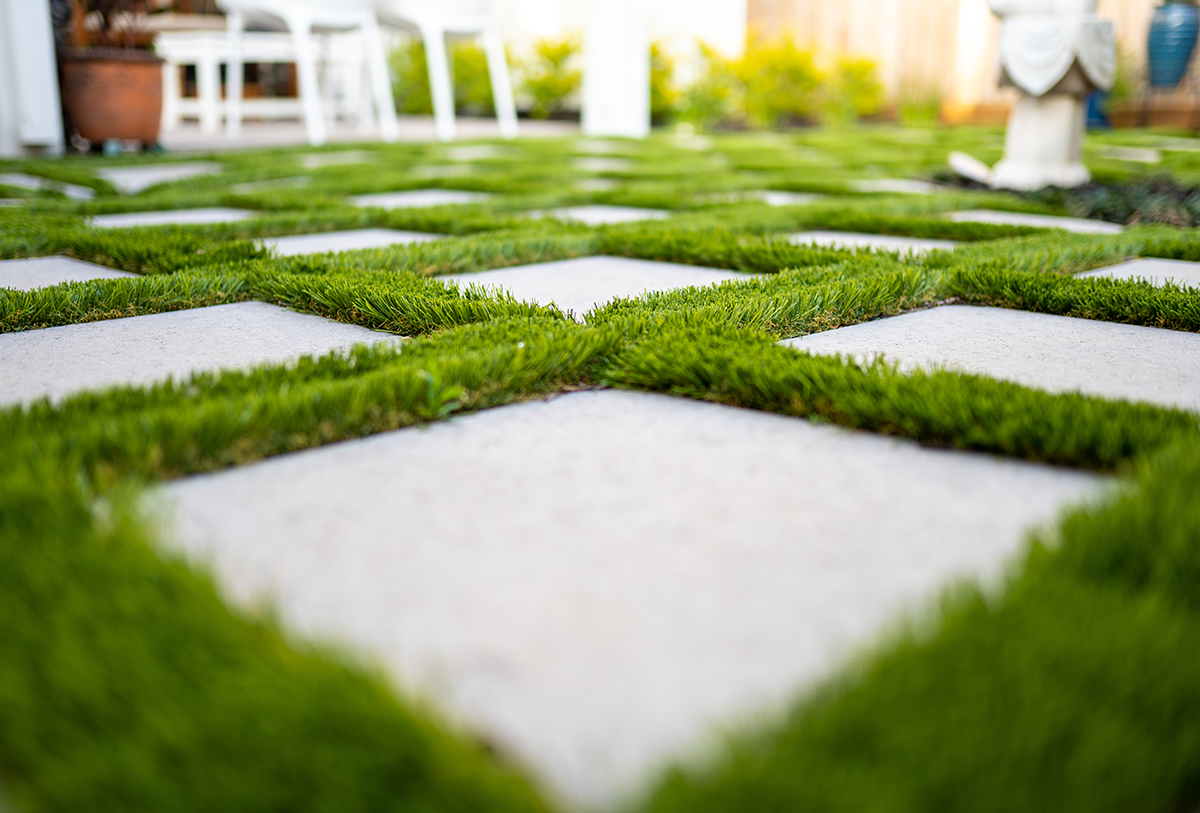
Looking over the emerald expanse of your new artificial turf lawn isn’t just satisfying, it can also help ensure you’re one step ahead of any potential problems before they become an issue.
Modern synthetic lawns have come a long way from what many people think of when they picture the old “fake grass” of years past. High-grade synthetic turf is extremely resilient to heat, weather, foot traffic, and damage, but it’s not completely indestructible. So in addition to the above maintenance tips, perform regular inspections of your artificial turf to identify and repair any possible damage, such as loose seams or tears.
While you hopefully won’t have to deal with any issues, spotting them and making any necessary repairs can help extend the life of your synthetic lawn; keeping it green and pristine for years to come.
Final Thoughts

With proper care, artificial grass can be a long-lasting, attractive, and low-maintenance alternative to its natural, high-maintenance counterpart. By following these six tips, you can ensure your synthetic lawn remains in excellent condition for years—allowing you to fully enjoy the benefits of your investment.
Have more questions about artificial turf?
If you have any questions about new or used artificial turf, installation, or maintenance, the experts at ReTURF are here to help. With our extensive experience in the turf industry, we’re happy to assist you in making informed decisions for your landscaping needs. Don’t hesitate to reach out to our team for professional turf guidance and installation support. Call us at (828) 518-5787 or click here to contact us.

